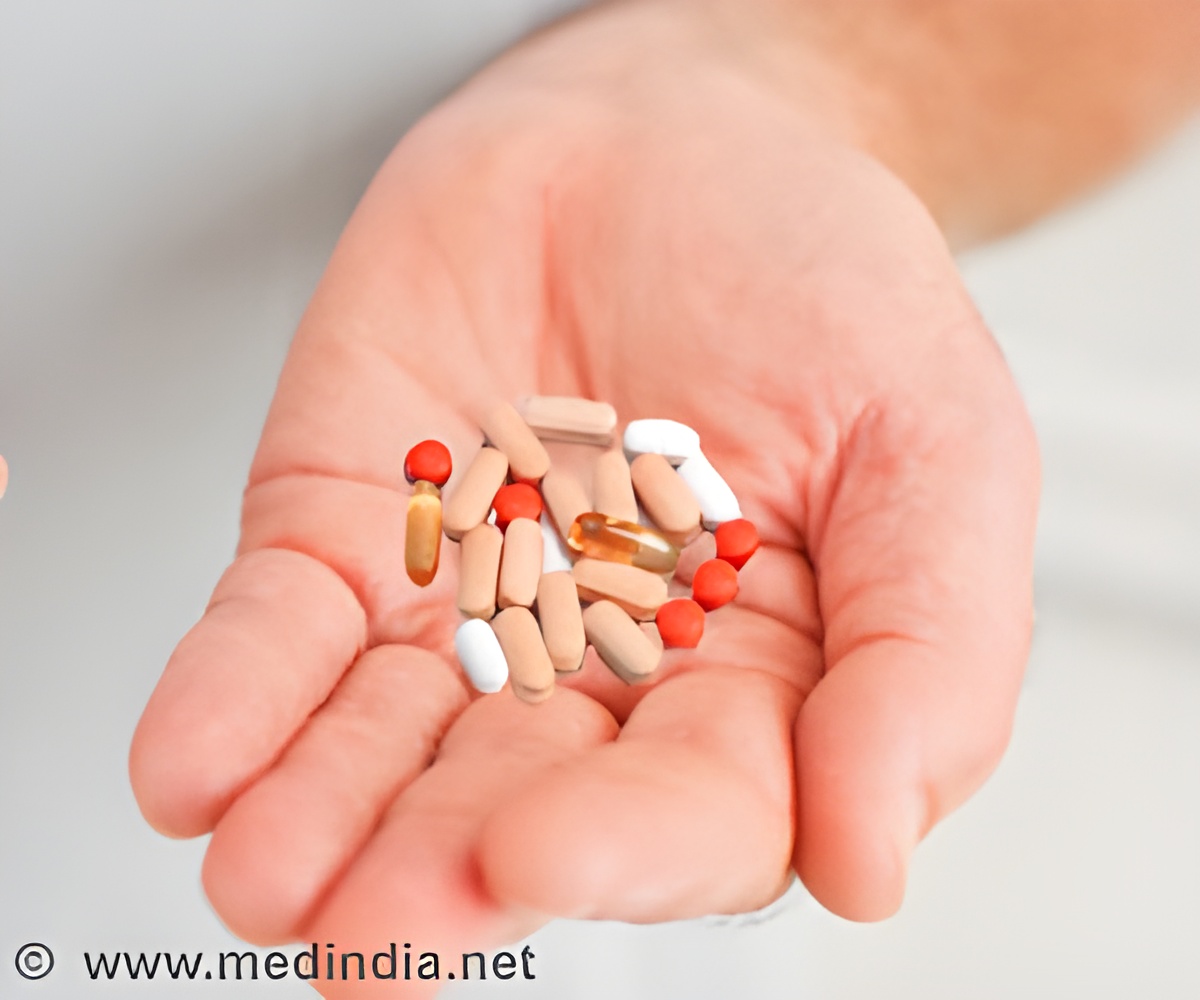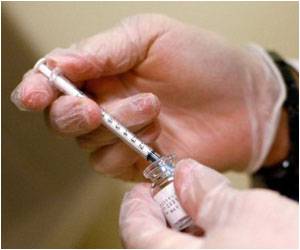New research indicates that drugs called dipeptidyl peptidase-4 inhibitors commonly used to control blood sugar levels in people with type 2 diabetes may also reduce the risk of autoimmune diseases.

"DPP-4 is a transmembrane glycoprotein widely expressed in various cells and is also involved in the immune system," says Seoyoung C. Kim, MD, MSCE; assistant professor of medicine; Division of Pharmacoepidemiology & Pharmacoeconomics; Division of Rheumatology, Immunology and Allergy at Brigham and Women's Hospital in Boston and lead investigator in the study. "Prior studies suggested a potential role of DPP4i as a novel therapy for several inflammatory diseases by inhibiting T-cell proliferation and cytokine production. Our hypothesis was that patients with type 2 diabetes starting a DPP4i would have a reduced risk of incident RA and other autoimmune diseases compared to those patients starting non-DPP4i hypoglycemic agents."
Using the data from United States commercial insurance claims from 2005 to 2011, Dr. Kim's team compared two mutually exclusive groups: 58,275 patients with type 2 diabetes starting DPP4i combination therapy with patients with type 2 diabetes starting non-DPP4i combination therapy.
Patients taking insulin, or with pre-existing systemic autoimmune diseases, HIV or cancer were excluded.
Rheumatoid arthritis and other autoimmune diseases were defined with two or more diagnosis codes that were seven or more days apart and one or more prescriptions for disease-specific immunosuppressive drugs or steroids. Potential confounders such as age, sex, co-existing conditions, diabetes-related factors, medications, and health care utilization were controlled for in the analysis.
Dr. Kim's team found that patients with type 2 diabetes who were starting a DPP-4 inhibitor appear to be at a lower risk of developing RA or other autoimmune diseases compared to those starting non-DPP4i drugs. Although the overall incidence rate of RA or other autoimmune diseases was low (approximately one in 1,000), patients taking DPP4i combination therapy appeared to be 34 percent less likely to develop RA and 27 percent less likely to develop the other autoimmune diseases. Subgroup analysis comparing DPP4i to sulfonylurea showed similarly protective effect of DPP4i on autoimmune diseases, but not comparing DPP4i versus thiazolidinediones.
Advertisement
Patients should talk to their rheumatologists to determine their best course of treatment.
Advertisement
Editors' Note: Dr. Kim will present this research during the ACR Annual Meeting at the San Diego Convention Center at 3:00 PM on Tuesday, October 29 in Room 28 B. Dr. Kim will be available for media questions and briefing at 1:30 PM on Sunday, October 27 in the on-site press conference room, 27 AB.
Abstract Number: 2658
Dipeptidyl Peptidase-4 Inhibitors In Type 2 Diabetes May Reduce The Risk Of Autoimmune Diseases
Seoyoung C. Kim1, Sebastian Schneeweiss1, Robert J. Glynn1, Michael Doherty1, Allison Goldfine2 and Daniel H. Solomon3, 1Brigham and Women's Hospital, Boston, MA, 2Joslin Diabetes Center, Boston, MA, 3Harvard Medical School, Brigham and Women's Hospital, Division of Rheumatology, Division of Pharmacoepidemiology, Boston, MA
Background/Purpose: Dipeptidyl peptidase-4 inhibitors (DPP4i), such as linagliptin, saxagliptin, and sitagliptin, are oral glucose-lowering drugs for type 2 diabetes mellitus (T2DM). DPP4 is a transmembrane glycoprotein widely expressed in various cells including fibroblasts, T lymphocytes, and macrophages, and has a co-stimulatory function in the immune response. Altered levels of DPP4 activity were noted in patients with autoimmune diseases (AD) such as rheumatoid arthritis (RA), systemic lupus erythematosus (SLE), inflammatory bowel disease (IBD), psoriasis, and multiple sclerosis (MS). The objective of this study was to estimate the incidence rate (IR) of systemic AD such as RA, SLE, psoriasis, MS, and IBD in patients with T2DM initiating a DPP4i drug compared to those initiating non-DPP4i oral hypoglycemic agents.
Methods: We conducted a population-based cohort study using commercial insurance claims data (2005-2011). Among patients aged 40 years with T2DM, two mutually exclusive exposure groups were selected: 1) DPP4i combination therapy (DPP4i and at least 1 other oral non-DPP4i drugs) and 2) non-DPP4i combination therapy (2 or more oral non-DPP4i drugs). Patients with a diagnosis of systemic AD, HIV, and cancer, and use of insulin-containing drugs or immunosuppressive drugs at baseline were excluded. Incidence rates (IRs) were calculated for RA, other AD and composite AD. RA and other AD were defined with 2 diagnosis codes that were 7 days apart and 1 prescription for disease-specific immunosuppressive drugs or steroids. Propensity score (PS)-matched Cox regression models compared the risk of RA or AD in DPP4i initiators compared to non-DPP4i initiators, controlling for baseline demographic factors, comorbidities, medications, and health care utilization. Sensitivity analyses matched on PS compared DPP4i combination therapy initiators separately to sulfonylurea combination therapy initiators and to thiazolidinediones combination therapy initiators.
Results: We included 58,275 patients starting DPP4i combination therapy 1:1 PS-matched to those starting non-DPP4i combination therapy. Risks of RA and other AD were significantly lower in the DPP4i group vs. non-DPP4i with the HR of 0.64 (95% CI 0.45-0.91) for RA, 0.53 (95% CI 0.39-0.73) for other AD, and 0.57 (95% CI 0.45-0.73) for composite AD (Table). In sensitivity analysis, the risk of other AD and composite AD was significantly reduced in initiators of DPP4i combination therapy compared to sulfonylurea combination therapy and thiazolidinediones combination therapy, but the risk of RA was not.
Conclusion: In this large cohort of T2DM patients, initiating DPP4i combination therapy was associated with a decreased risk of incident RA or other AD compared to those initiating non-DPP4i combination therapy. These results suggest possible pharmacologic pathways for reducing the incidence of AD.
Disclosures: S. C. Kim, Pfizer Inc, 2, Pfizer and Asisa , 9 S. Schneeweiss, Pfizer Inc, , 2, Novartis Pharmaceutical Corporation, 2, Boehringer Ingelheim, 2, WHISCON, LLC, 5, BOOZ and Company, 5 R. J. Glynn, AstraZeneca, 2, Novartis Pharmaceutical Corporation, 2 M. Doherty, None. A. Goldfine, None. D. H. Solomon, Lilly, Amgen, CORRONA, 2, Lilly, Novartis, BMS, Pfizer, 6, Lilly, BMS, Novartis, 9
Source-Newswise















